Australian Expeditions 2001-2003
by Christine Lambkin
Dave Yeates, Mike Irwin, Ev Schlinger, and Chris Lambkin were part of a large CSIRO ANIC group that spent six weeks in the field in May and June 2001 in the isolated Keep River and Gregory National Parks in the Northern Territory Australia, to observe the ecological, and behavioral characteristics of therevids in their environments, fill taxon and geographic gaps in extant therevid material, and provide well- preserved material for molecular and morphological studies. The group sampled 54 sites using malaise traps, flight intercept traps, hand nets, and soil sieving. Thousands of therevids, with many new species and several new genera, were collected.
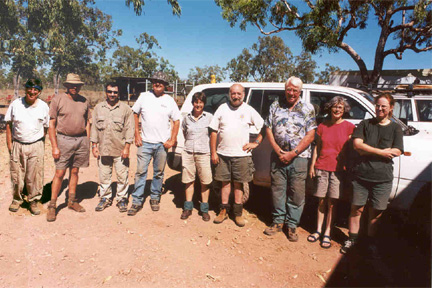
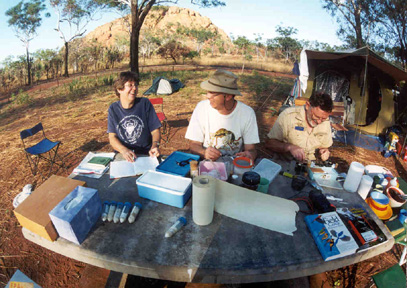
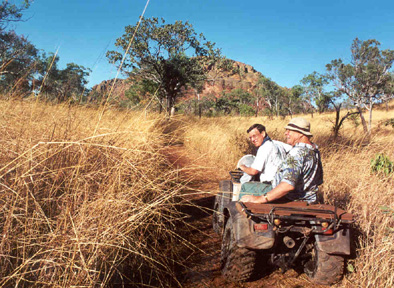
Chris Lambkin, accompanied by CSIRO staffer, Noel Starick, carried out a two week preliminary survey of the Therevid fauna in the semi-arid desert parks of western Victoria in spring (September) of 2001. A total of 14 malaise traps; 12 small Sharkey and 2 large 6m traps in Hattah-Kulkyne, Murray-Sunset, Little Desert, Wyperfeld, and Grampians National Parks. Due to heavy rainfall, few therevids were collected.
Dave Yeates, Jo Hamilton, Noel Starick, and Chris Lambkin mounted a three week expedition to Black Braes National Park in north Queensland, Australia in November 2001. This isolated new National Park is about 300 km north of Charters Towers, and situated on a high plateau. 25 malaise traps were set and serviced at 13 sites; 10 in Black Braes NP and 3 at Undarra Volcanic National Park 300 km further north. Therevids were collected, sorted, critically point dried, pinned, labelled and identified using a preliminary key to genera. Over 1500 specimens of Therevidae in 11 genera of the Therevidae were identified, three undescribed, from the material collected during this expedition. A comparison of the Therevid biodiversity at two sites, both in dry creek beds, one at Undarra and one at Black Braes (approximately 300m higher elevation) was completed. All therevid material collected was entered into the ANIC Therevid database using BIOLINK. Dave Yeates wrote an article for Biologue, the news magazine of the Australian Biological Resources Study, on the expedition.
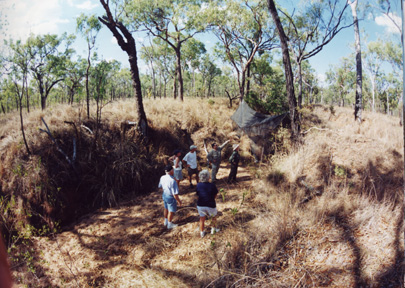
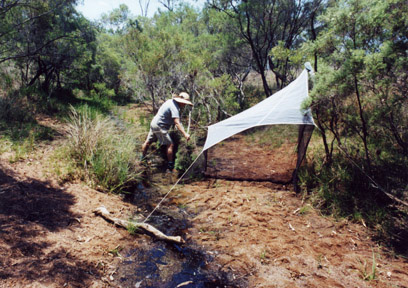
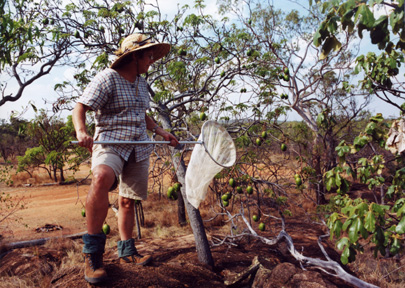
In January 2002, Chris Lambkin and Noel Starick mounted a two week malaise trap program in Kosciuszko National Park, in the Australian Alps as the Diptera component of the New South Wales National Parks and Wildlife Biodiversity Blitz survey. Eight traps (four small and four large) were set at six sites, at elevations from 1400 m to 2100 m (in the snow). Dave Yeates and Jo Hamilton joined to help with the some of the sorting. Material was collected sorted, and labelled, and fly families identified. Therevids were sorted and identified to genus. Ninety therevids were collected including 30 Ectinorhynchus and 1 Johnmannia.
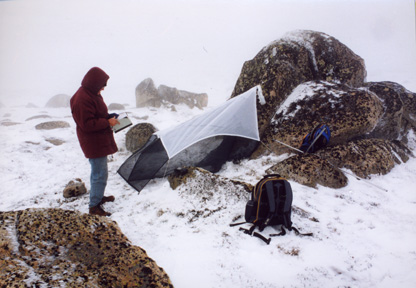
In early October 2002 following the International Congress of Dipterology Chris Lambkin, Noel Starick, Gail Kampmeier, and Narelle Power trapped therevids on Moreton Island, near Brisbane, Queensland. Many therevids were observed, photographed, and caught mating on the sand.
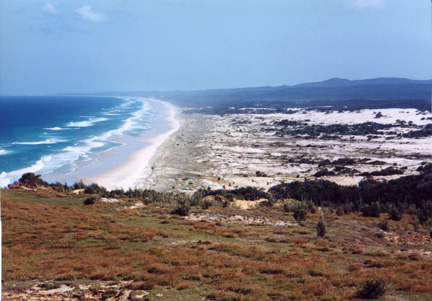
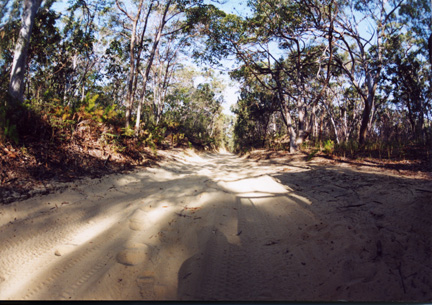
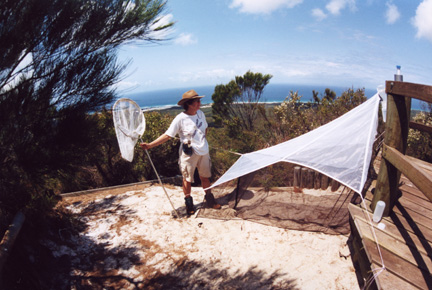
Extensive fires in Carnarvon National Park, Queensland meant quickly revised plans for Dave Yeates, Jacquie Recsei, Noel Starick, and Chris Lambkin in November 2002. Instead the group attacked the semi-arid desert regions of north-western Victoria over two weeks. 23 malaise traps were set and serviced at Wyperfeld, Murray Sunset, Little Desert National Parks, Lawloit State Recreation Reserve, and Big Desert State Forest. Much of the collecting activity centred on Little Desert National Park where the myrtaceous heath was at the peak of spring flowering. Because of the severe drought numbers were down with about 700 therevids collected, but biodiversity remained high, with at least one new genus collected.
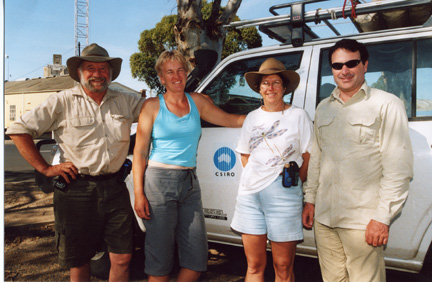
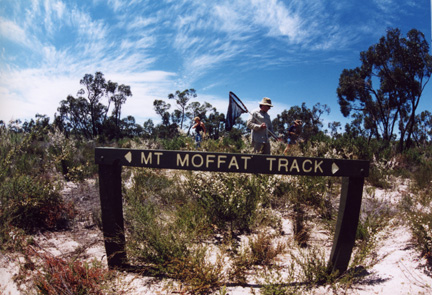
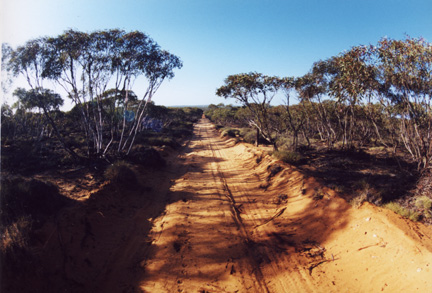
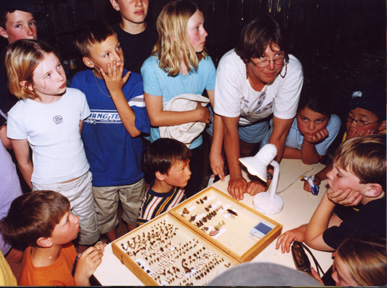
Photo Noel Starick, CSIRO.
After the massive bushfires in January- February 2003 Chris Lambkin, Jacquie Recsei, Noel Starick and David Rees returned to Kosciuszko National Park in March to assess the effect of wildfires on Diptera diversity. The results will be compared to the base-line New South Wales National Parks and Wildlife Biodiversity Blitz study in January 2002. They have been also asked to return to replicate their survey in January 2004.
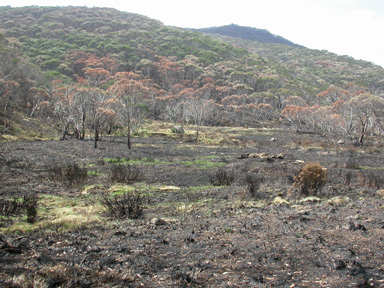
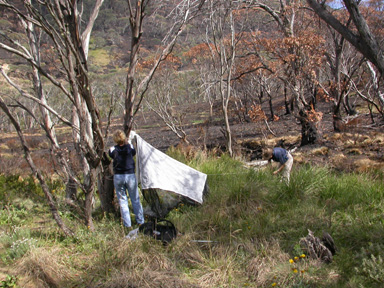
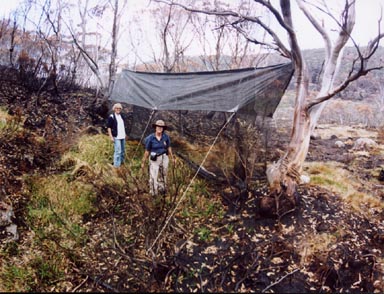
ANIC Pilbara Field Trip, April-May 2003
by Kim Pullen
The ANIC’s massive holdings owe a lot to a series of ‘survey’ expeditions staged during the 1960s, ’70s and ’80s to more or less remote parts of Australia that were considered not well known entomologically. Such trips are now few and far between, but this year generous sponsorship from the Schlinger Foundation allowed a 6-week expedition to the Pilbara region of WA in April and May. Field trip participants were Tom Weir, Ted Edwards, Frances FitzGibbon, Rolf Oberprieler, Christine Lambkin, Barry Richardson, Jacquie Recsei, David Yeates, Adam Slipinski, Andreas Zwick, Noel Starick, and Kim Pullen.
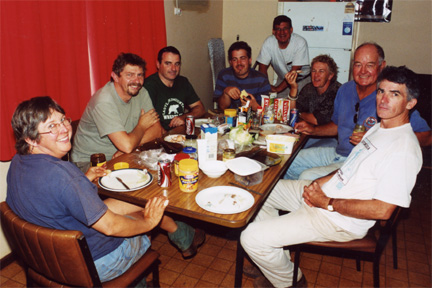
Mike Irwin, Jacquie Recsei, Frank Parker, Kim Pullen. Photo Noel Starick, CSIRO.
A preliminary 1-week reconnaissance trip by Tom and Kim laid the groundwork, and the 6-strong first team of the expedition proper set out from Canberra on 14 April in two 4WD vehicles for the long drive to Karijini National Park. Set in the Hamersley Range, Karijini’s arid countryside is covered in clumps of spinifex and stark white gum trees contrasting against the red stony ground. Steep, narrow gorges cut into the range, many with spring-fed pools and streams providing oases for wildlife and swimming holes for tourists. ANIC taxonomists sampled the fauna using Malaise traps, insecticidal fogging and light sheets, and manual methods such as sifting litter, beating foliage, netting—both aerial and aquatic—and plain old hand-picking.
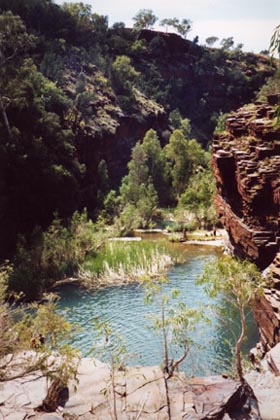
Photo by Chris Lambkin, CSIRO
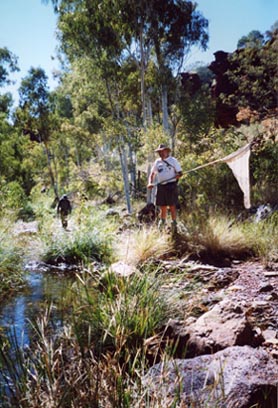
Photo Chris Lambkin, CSIRO.
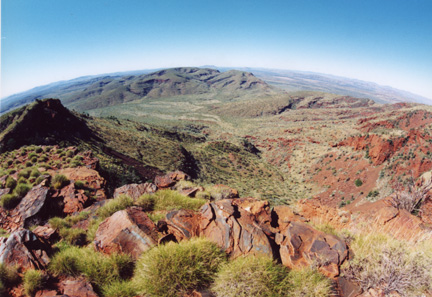
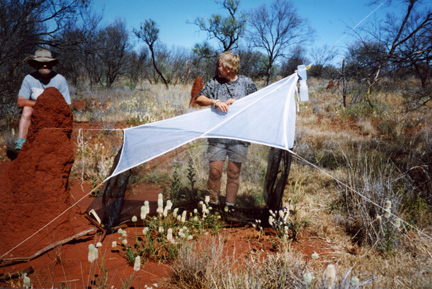
After 2 weeks in Karijini, Team 1 moved on to Millstream Chichester National Park, centered around the former Millstream homestead on a deep spring-fed pool on the Fortescue River. Similar methods were used to sample the fauna here, with a lot of time spent along the river stretches. Both national parks had recently had considerable areas burnt out, limiting productive collecting away from the streams and gullies.
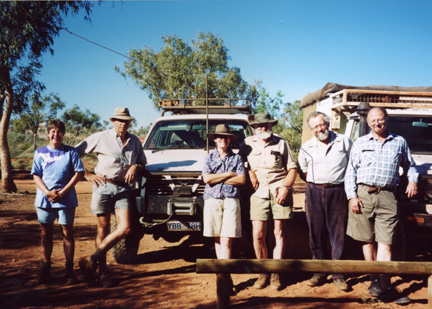
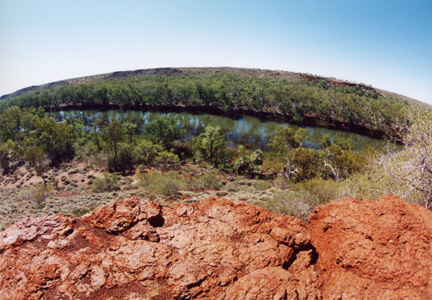
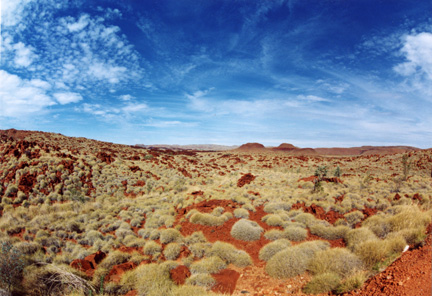
Photo Noel Starick, CSIRO.
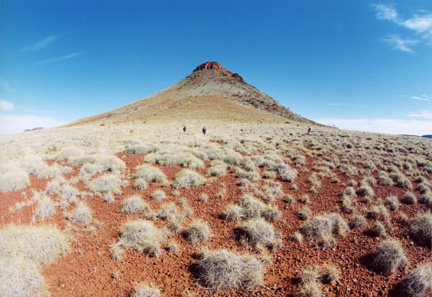
The second team arrived in Karratha by air on 4 May to take over duties. Team 1 flew back home, except for a dedicated Christine who opted to stay for the duration (there is no such thing as too many therevid flies). Team 2 repeated Team 1’s exercise in reverse sequence, including the 5-day drive home via the Nullarbor.
Late in October and most of September, Christine headed to WA as part of a ABRS funded collecting trip with Jac (Jacquie Recsei) our great technician, Andreas Zwick doing his PhD on Anthelid moths, and Rolf Oberprieler looking for weevils, especially those associated with cycads. They had 42 traps to be set up from Cape Arid right across the south and then up the western coast to Perth. They then collected all the way up to just north of Geraldton, and pulled out traps Noel and Christine had set in September.
Christine flew out and left Jac to be joined by Jo Hamilton and later Dave to pull the traps out. (There is at least one new species in the Ectinorhynchus group from that trip).
Thanks must go to the Schlinger Foundation for making it all possible, and to the rangers of both national parks and the staff of the WA Department of Conservation and Land Management (CALM) for accommodation, hospitality and much help and advice. I also would like to thank my colleagues for their dedication at all hours of the day and night and their safe driving, and especially to Tom for his planning and logistics. A fair proportion of the Pilbara insect fauna now resides in Canberra and will be studied over the next couple of centuries.